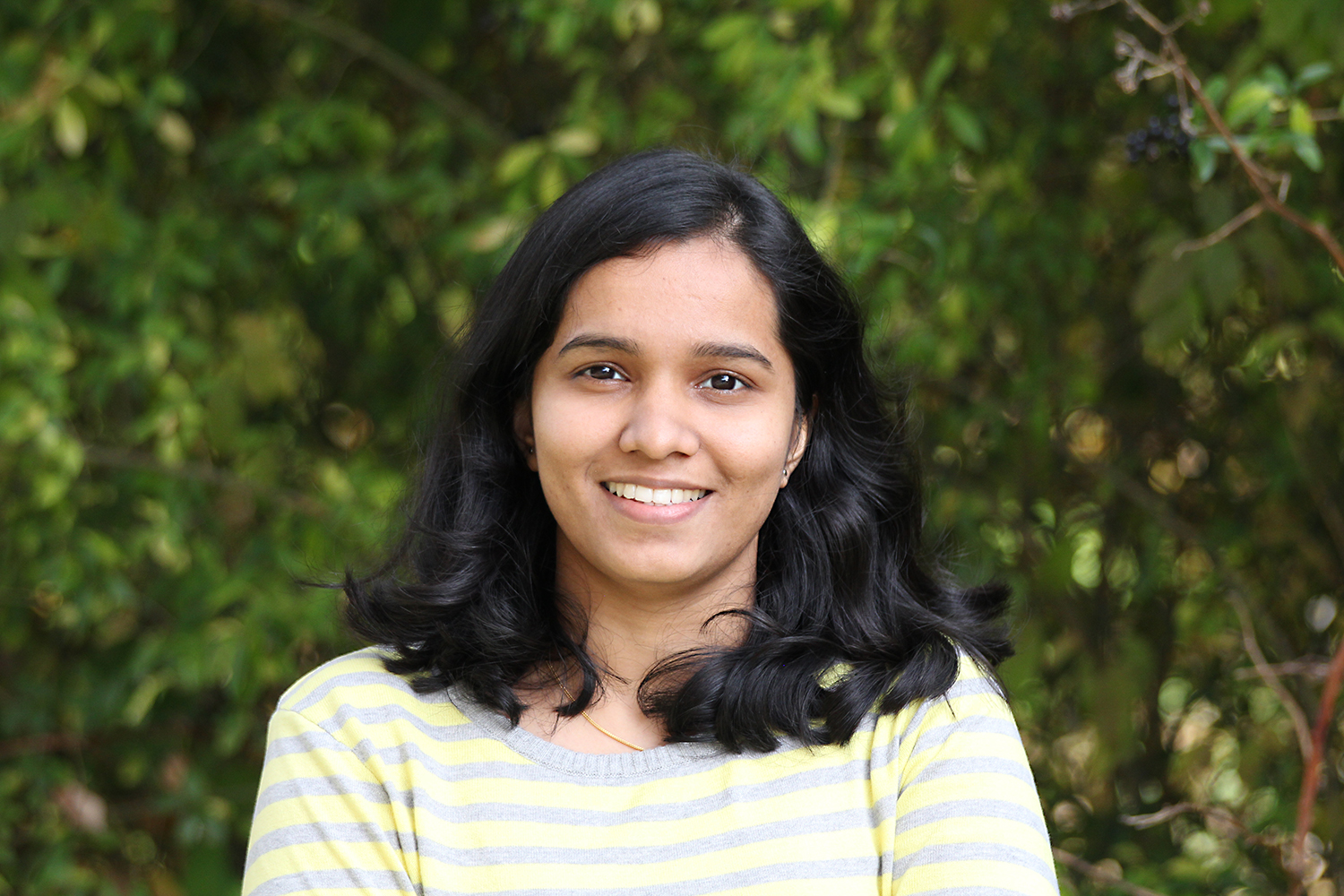Before the concrete cracks A short portrait of Athira Vadakkekkara from the Research Training Group 2075
Detecting damage to structures in time can sometimes save lives. Athira Vadakkekkara is doing research on the development of numerical methods to evaluate the condition of concrete structures and predict their possible failure. The civil engineer is a doctoral student in the Research Training Group 2075 “Modelling the constitutional evolution of building materials and structures with respect to ageing” of the Core Research Area “Future City”. We introduce Athira Vadakkekkara in a short portrait.

Athira Vadakkekkara is doing research in the Research Training Group 2075. Bildnachweis: Institut für Statik und Dynamik/TU Braunschweig
Who are you and what is your research topic?
My name is Athira Vadakkekkara and I have done my Master’s degree in Structural Engineering from India. I have joined the Research Training Group 2075/2 as a research assistant at the Institute of Structural Analysis and Dynamics. My Master’s thesis was on the Applications of Fractals in the study of Fracture Properties of Concrete. “Fractal” can be defined as a detailed, recursive, and infinitely self-similar mathematical set. The self-similarity contained in the tortuous fracture surface of concrete makes it an ideal candidate to be considered as a fractal. Within the Research Training Group, my research focuses on the numerical modelling of damage behaviour of concrete.
Which research question are you working on?
Concrete is the most versatile material used in the field of civil engineering. Concrete structures generally consist of numerous micro-cracks that might result in failure of the concrete structures under service loads, accidental load and/or exposure to regular environmental conditions. Thus, a micro-crack in concrete may become a potential source of crack propagation leading to a growth of major crack. Hence, it is important to develop advanced methods to assess the damage conditions and to predict the failure mechanisms of structures. Through my research, I would be trying to develop numerical approaches to investigate the damage behaviour of concrete.
What inspires you about your research?
During my master’s thesis, I have been focusing on the fracture properties and failure mechanisms of concrete through experimental approaches. Even though, experimental investigations give us more realistic results, they are expensive and not very flexible as compared to computational tools based on numerical approaches. I find it interesting to apply the vast possibilities of numerical methods to study the damage behaviour of concrete. The extent of freedom and flexibility we have in numerical methods is fascinating.
Why is your topic relevant to the Future City?
The assessment and detection of damage in concrete structures is important as this will help to avoid any adverse effects due to unexpected or unpredicted failures. Early detection of damage and cracks in the structures would also help to carry out suitable repair or maintenance required at the right time. As there are many buildings in the world that are either approaching their expected service life, or possibly require damage assessment and maintenance due to loading and environmental conditions. I believe, it is of great importance to develop more advanced computational tools and technologies to assess the damage as well as predict the failure mechanisms, and thereby avoid any catastrophic affects that may happen due to the failure of the structures.
What is special about participating in the Research Training Group “Modelling the constitutional evolution of building materials and structures with respect to aging”?
It is interesting to be a part of a Research Training Group where different members focus on different research areas, but have a common basic goal, “Modelling the constitutional evolution of building materials and structures with respect to aging”. The frequent discussions within the Research Training Group would not only help us learn something new, but also help to find new perspectives towards our own research focus.
